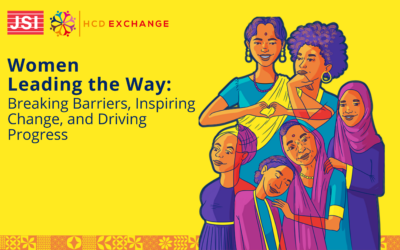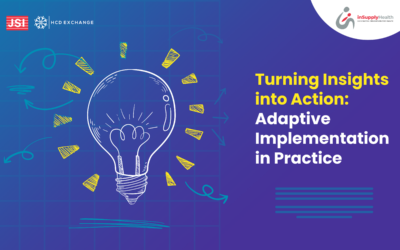We kicked off 2023 with back-to-back sessions that explored how to Demystify Scale and Scale HCD Solutions, and this January, we delved into the different pathway options for scaling social impact with our partner, Spring Impact.
What it takes to scale well
Practitioners today are often asked to start their programs with scale in mind, and oftentimes this concept gets captured as growing their projects to reach more people. What is the difference between growth and scale, and how can we ensure we are doing the latter effectively?
Organizations that are growing are adding resources to their project at the same rate as they are increasing their reach and impact. On the other hand, organizations that are scaling are expanding their reach and impact at a rate that is accelerated, and outstrips the resources that are invested. The key with scale is that societal challenges are often so large that a direct ratio of resources to impact will not be able to achieve the level of impact that is needed to solve them.
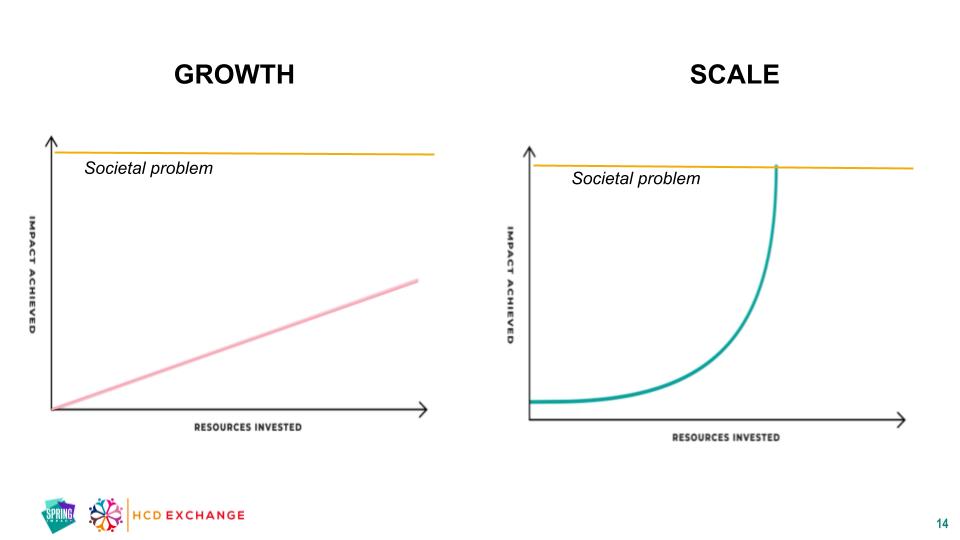
Scale is more about impacting societal problems; it’s not necessarily about growing your organization or growing your solution. In fact, scaling impact might not mean growing your organization at all. If, for example, the impact is being achieved by others taking up and delivering the solution instead.” Nora Dettor, Spring Impact.
It is important to think about the type of societal challenges that your work is tackling. It could be that once the challenge has been solved at a societal scale, there is no more need for the intervention — such as with the eradication of a disease like smallpox. It could also be that even with meeting the need at scale, there is a need for continuous delivery of the solution — such as with contraception for example.
The nature of most societal problems is that they will continue to exist in one form or another, there will continue to be a need for solutions in the future as well. Scaling impact, then, is about scaling solutions that can serve those who are experiencing that need, and importantly, being able to continue to deliver that sustainably at scale.” Nora Dettor.
It is also important to consider that a solution or intervention created in one specific context may not be suited for another context. As such, it might be that only parts or iterations of the solution can be scaled, specifically with highly tailored interventions that have been designed through a bespoke process like human-centered design (HCD). Scaling well ensures that solutions are anchored in local contexts and are being driven by local communities. It takes testing and adaptation in new contexts to meet the needs of the people experiencing the problem and principles from the HCD process can help to ensure that solutions are being scaled well.
Scaling Pathways
There are two main pathways to scale; the first are pathways for delivery and distribution of a solution (i.e.: making the solution more widespread), and the second are pathways that enable us to change the system in which the problem exists (i.e.: tackling the scope of the challenge).
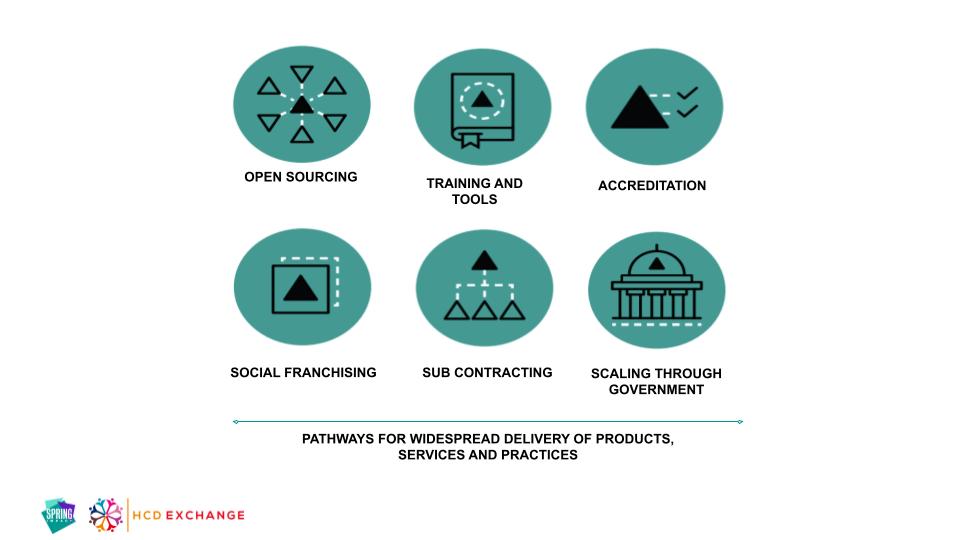
Pathways for Widespread Delivery of Products, Services and Practices
Open Sourcing
Open sourcing your solution involves creating resources for others to use the solution in their own content, such as online videos, best practice booklets and easy-to-use tools and aids. This can be a relatively low-cost and fast way to have a solution scaled.
Training
This involves training others to implement your solution through courses, workshops or seminars, and typically works best when resources need some initial explaining or adaptation but can then be easily used independently. This is a possible avenue for revenue as others could pay for the training as a service. The Child Health and Development Center in Uganda developed a training model for partners to deliver a program focused on reducing violent and harsh parenting, and established agreements whereby partners would provide back data so that the Center could continue to improve the solution.
Accreditation
Accreditation provides formal third-party recognition through a recognized ‘mark’ of competence and compliance. Partners must prove that they are complying with certain standards or criteria to receive accreditation. It may take time to establish, but it can provide both a high level of quality assurance and a potential revenue stream.
Social Franchising
Similar to a commercial chain, social franchising involves packaging a proven model and providing selected partners with the training and ongoing support needed to run the solution to a universal standard. A success story of social franchising is Street Business School, an NGO that empowers women to become entrepreneurs to end intergenerational poverty. They have scaled their impact by training other NGOs to implement their model, and have collaborated with 270 organizations across 35 countries.
Sub-Contracting
Similar to social franchising, subcontracting engages partners to deliver the solution in their area. Subcontracting is a helpful pathway when wanting to scale quickly, and also wanting to allow for partners to have ownership and independence through the process.
Scaling through Government
Scaling through government can be a long-term goal for many public health organizations, and can lead to long-term and sustainable impact. To achieve this, solutions must align with government priorities and often require enormous time and commitment to be successful. Marie Stopes International (MSI) in Zambia undertook an HCD process to develop Diva Centers designed to increase family planning access and awareness for teens. In order to scale through government, the solution required a redesign to align with government systems and ensure that they felt ownership over the solution.
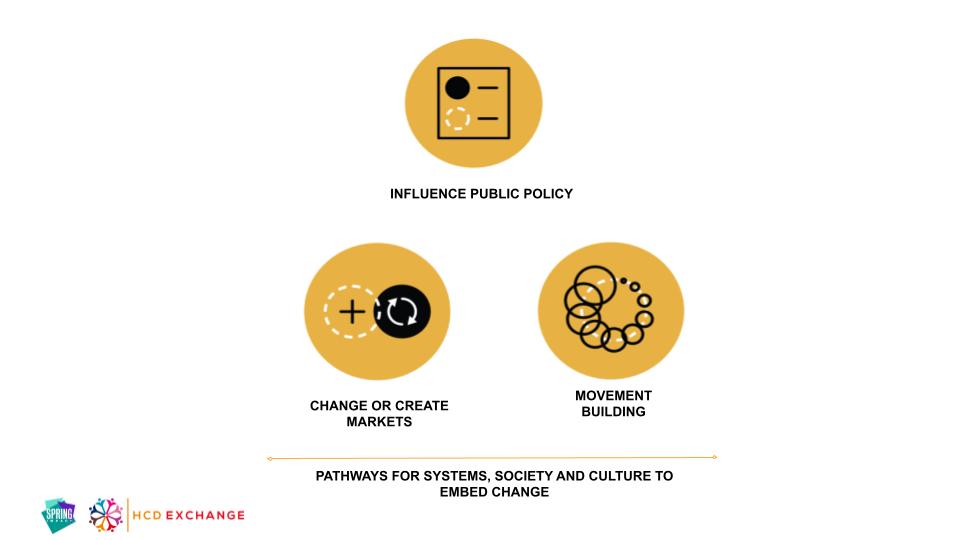
Pathways for Systems, Society and Culture to Embed Change
Influence Public Policy
This approach requires changing the way a problem is addressed at a policy level, possibly including changing the law to include protections for certain groups, or re-allocating funding to particular services. This pathway might require having specific skill sets on a team, and can also take time.
Change or Create Markets
This pathway involves generating demand for a service to encourage new suppliers to enter the market. Existing solutions to solve the challenge may be underused services due to access or perceptions, and with increased demand, private sector actors may also find an incentive to play a role in delivering impact.
Movement Building
This involves starting a social movement that creates a community of followers who are all committed to addressing a certain challenge. These typically require sustained campaigns in support of a social goal with mass appeal, and can spread quickly and widely, while empowering others to engage and contribute in their own way. Girls Not Brides have convened a network of 150 organizations globally committed to ending child marriage through their movement, all united behind one common objective.
Key Considerations for Selecting your Scale Pathway
There are benefits and trade-offs for each of the different pathways, making different pathways best suited to different solutions and contexts. The nature of the problem you are addressing will determine the best scale strategy to use.
Flexibility vs. Control
This consideration is about how much or little control you will have over how a solution is scaled. For example, with open-sourcing, you have very little control over how another organization may interpret or use your solution, and no way to monitor how it is being used. Accreditation or social franchising will have a much higher level of control because of the higher level of engagement and the specific requirements, criteria and agreements put in place for the pathway.
Fast vs. Slow
Another possible trade-off of different pathways is the time that it takes to achieve the impact. Training, for example, can be a very quick way of achieving scale, that only requires investment of time and resources up front. Working to change policy or markets, on the other hand, can be extremely time-intensive, given the amount of effort needed to change minds, gain buy-in and innovate around solutions.
Simple vs. Complex Solution
Different pathways can also be selected based on the level of complexity of the solution. Scaling with the government may be the best fit for complex solutions that require significant investment, support, regulation, and delivery requirements. Movement building, however, is often created with a single, simple message that can unite masses.
So really thinking, which pathway is right for us? What is the nature of the problem you’re tackling? The nature of your solution, how you retain the human design elements of your approach as you scale and what role you want to play in the system,” Grace Veenman, Spring Impact.
Case Study
Spring Impact provided an example of how Strong Minds, an organization dedicated to improving mental health in Africa, scaled their reach. Strong Minds identified the benefits and mitigated trade-offs for scaling their reach by adopting a training model, in which they trained local stakeholders – community members, health workers and teachers – to increase their impact.

Lean Testing Approach
Similar to the HCD approach of prototyping, it is important to test, learn and iterate on any pathway you consider. Once a pathway has been selected, identify the biggest possible risks and craft a hypothesis that can be tested.
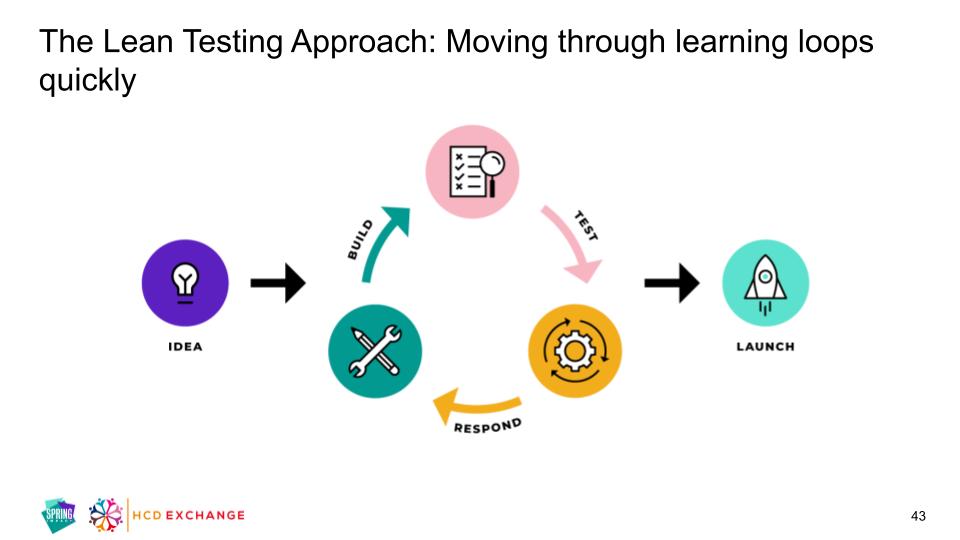
Taking this lean approach to testing can reduce the risk of failure, and create the opportunity to iterate and improve upon a solution and a pathway to help organizations reach exponential levels of impact with their work.

